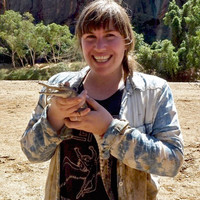University of Sydney
School of Life and Environmental Sciences
Thesis abstract:
Human populations continue to grow at an exponential rate. Inevitably, this has flow-on effects that degrade habitats. As a result conservation management is beginning to include the consideration of human impacts tantamount to or surpassing the impacts of introduced predators. The impacts of both may be seen as major threats to the longevity of local wildlife populations. This is particularly true for small mammal populations in Australia that are subject to predation pressures from the introduced red fox (Vulpes vulpes) and domestic cat (Felis catus), as well as human disturbance. The fear experienced by prey species subject to these threats may result in severe stress impacts from the accumulation of the stress from fear and that of standard ecological processes. Australian fragmented urban and pastoral habitats have been proven to be hotspots of wildlife activity, however, there is currently no nationally prescribed threat abatement to protect the extant mammals of these habitats. Mitigation of human disturbance and introduced predators would benefit from assessments that consider the prey species physiological and behavioural stress responses in conjunction with their perceived landscape of fear – that is the peaks and troughs of high- and low-risk foraging areas relative to predator pressures within their habitat. My research investigates and refines methods for mapping landscapes of fear, and assaying faecal corticosteroids to quantify stress and reproductive states, for small mammals across disturbance gradients ranging from human activity to remnant habitat. I use filmed giving-up density surveys that incorporate predator scents, and light and sound disturbance, with principal components analyses that consider proximity to resources and stressors to determine if the structural complexity of a habitat should be altered to reduce fear and stressing of target prey species. I aim to illustrate the value of considering cumulative effects of fear and stressing in preserving predator-prey ecology.
